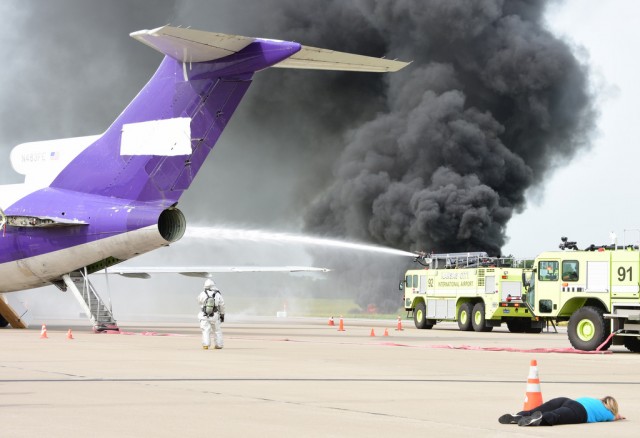
Full-scale disaster drill at Kansas City International, in full swing – Photo: JL Johnson | AirlineReporter
Practice makes perfect. And in the realm of aviation safety drills, it also creates incredible experiences for willing volunteers. Kansas City International Airport (MCI, or KCI as it’s referred to by the locals) recently hosted their triennial emergency exercise, and I was fortunate enough to score a role as a victim. I was told this was a full-scale drill from the beginning, but wasn’t sure exactly what to expect.
The closest I’ve ever been to anything remotely resembling an emergency was on my very first Airbus A320 flight just a few years ago from Minneapolis (MSP) to Pittsburgh (PIT). It was late, and after a typical approach the engines roared and we were on steep climb. Upon leveling off, the Delta captain came on to tell us we had briefly “lost steering.” After a missed approach and a fly-by, we landed uneventfully, were greeted by an ARFF (aircraft rescue and firefighting) escort, and towed to the gate. This experience, plus participating in some rudimentary safety training with Delta during last year’s #InsideDelta event, formed the foundation for my expectations.
I would soon learn I had no idea how disasters really play out, especially on the ground’¦
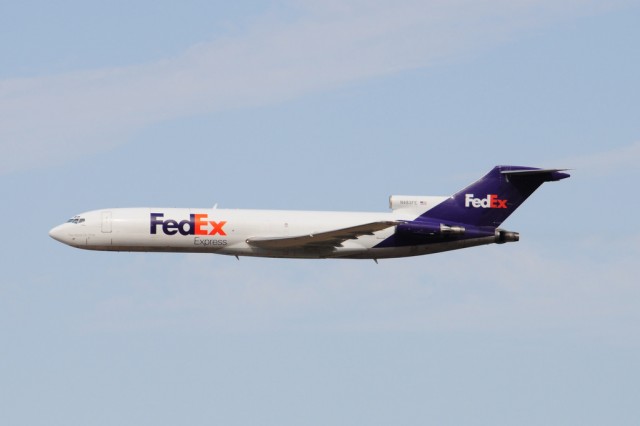
FedEx Boeing 727, named Colin, arrives to Kansas City. Image by JL Johnson.
A blog reader and aviation fan, JL Johnson (@user47), was recently able to witness the last flight and donation of a FedEx Boeing 727. He agreed to share his story and photos with the blog. Here is his story in his own words:
I suspect it’s no news to readers of
AirlineReporter.com, but we aviation enthusiasts are a unique group of folks. Of all the peer-groups I belong to, aviation geeks, that is, avgeeks, are the most loyal, diverse, and enthusiastic I have encountered. One thing I’ve noticed about avgeeks is they always want to deepen their bonds and connections to the industry. Whether it’s catching the newest livery while plane spotting and sharing it on social media, hopping on an inaugural flight, or social networking our ways into typically non-public areas with great aerodome views, we’re always curious. And, with this, I’ve noticed a trend.
It seems the vast majority of folks are focused on what’s new: New planes, new routes, new airlines, etc. And while this is great, it seems I’m more interested in what’s old. Maybe it’s my obsession with history, but I want to be a part of, or at least witness history. Recently, I got that opportunity.
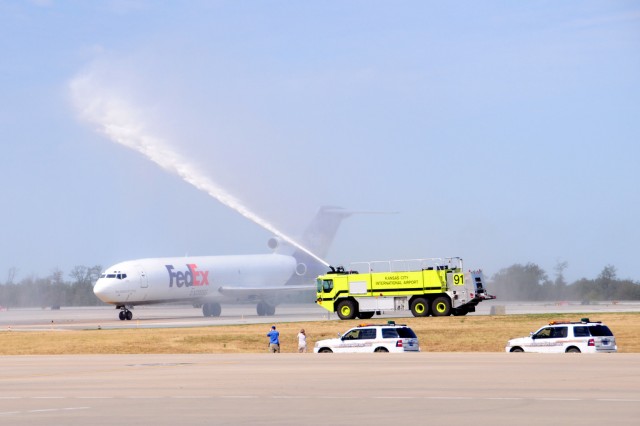
A proper airport welcome at KCI. Image by JL Johnson.
On Wednesday, August 1st at 10:14 AM CDT, a 34-year old Boeing 727 with registry N483FE touched down on Kansas City International Airport’s (KCI) runway 19R marking the end of its life with 34,671 flight hours.
The plane, named Colin, after the child of a FedEx courier, was originally delivered to Braniff Airways in 1978 as a passenger liner. In May of 1990 FedEx Express took ownership of the plane and oversaw its passenger to freighter (P2F) conversion. Shortly after, it entered the FedEx Express fleet where it served alongside dozens of other 727s for 22 years.
While the termination of FedEx Express flight 9044 from Memphis, TN marked the end of the sky for a plane, it highlights a quickening retirement plan for this and other tri-jets in fleets across the world. With higher maintenance costs for older planes and drastically more fuel-efficient alternatives on the market, planes like Colin have quickly fallen out of favor.
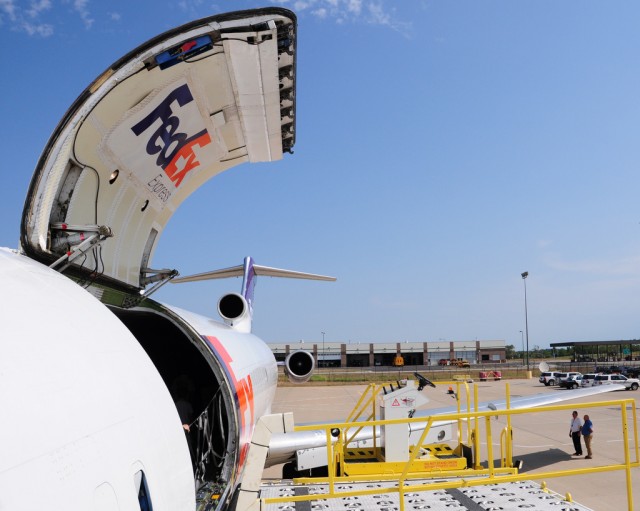
Those Boeing 727s that were converted to freighters increased their lifespan, but for Colin, he is about to start a new chapter. Image by JL Johnson.
So, what’s one of the world’s largest airlines to do with all of these old fuel inefficient planes? According to David Sutton, managing director of Aircraft Acquisition and Sales for FedEx, the solution was simple: Donate the planes to the communities they serve to support educational endeavors.
In 1995 FedEx Express launched their aircraft donation program with the donation of a plane to the FAA who at the time was interested in studying the effects of corrosion and fatigue on aging aircraft. Since then FedEx has donated over 50 airplanes to charities, museums, and airports.
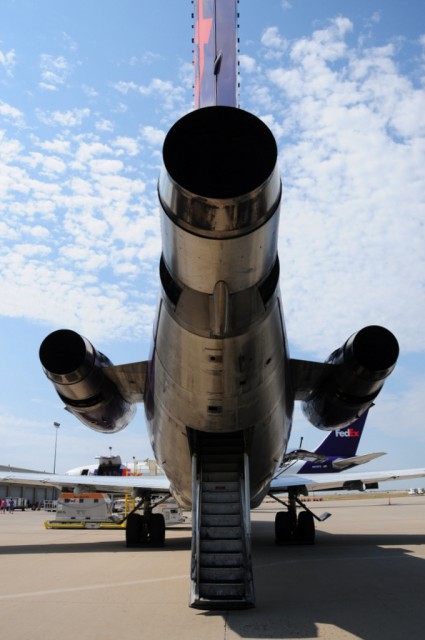
You are not a true avgeek if you don’t love a tri-holer. Image by JL Johnson.
Kansas City Aviation Director Mark VanLoh gladly accepted FedEx’s donation which the airport intends to use for emergency response training. Mr. VanLoh shared with the audience that with this plane, the airport and its crucial emergency responders will no longer be reliant on the generosity of its constituent airlines to loan their planes for training exercises.
In the coming days Colin will be relocated to the southeast side of the airport near an on-site overhaul base where it will lose its engines. While two of the engines will in some fashion make their way back into service, via parts or spares, one will be preserved and donated to the National Airline History Museum where patrons can visit and learn about the low-bypass jet engines that helped usher in the modern era of aviation.
37 PHOTOS FROM THE FEDEX EVENT
About the author: I’m a Kansas City, Missouri based Senior Business analyst with a ridiculous obsession for all things aviation. As an avid plane spotter, I can often be found on or near airport property with a telephoto lens. Let’s get social! I’m on twitter and most other social media as @user47 and occasionally blog over at http://jlsblog.com




